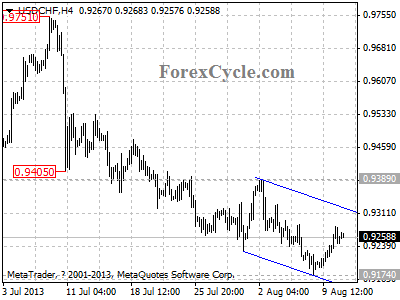By MoneyMorning.com.au
On and on the craze continues for dividend stocks.
We’d be lying if we said it didn’t concern us.
We’d be lying if we said the thought of an asset bubble hadn’t crossed our mind.
But that doesn’t mean the dividend craze will end soon.
The simple message is be alert but not afraid…
A big theme we’ve touched on in Australian Small-Cap Investigator is the way managers have had to change the way they run their businesses.
In some cases it’s a subtle change. In others it’s a blatant and desperate bid for shareholders to invest.
When most investors think about dividend payments they only look at it from the investors’ perspective. They don’t look at it from the businesses perspective.
That can be dangerous. That’s because a healthy looking dividend isn’t all it seems…
When a High Dividend isn’t all it Seems
You’re probably familiar with the saying ‘mutton dressed as lamb’. It’s the idea that something ugly or unappealing has been dressed up to look more appealing.
A healthy looking dividend can have the same effect. It can make an unappealing business appear to be attractive and worth investing in. And worse, plenty of investors will fall for it.
So, what’s the problem?
Companies have figured out that investors are craving dividends. You don’t need to be Einstein to work that one out. And so companies have figured out that they can use this dividend craze to attract investors to their company’s shares.
All they need to do is raise the dividend. Normally a company would raise its dividend if profits go up. But now you’ll find some companies are raising their dividend even if profits don’t go up…and sometimes when profits go down.
That’s because they know investors are more interested in the size of the dividend payout rather than the size of the company’s profits.
A classic example is Australian Securities Exchange (ASX) listed company Infomedia Ltd [ASX: IFM]. This is a stock we looked at about two years ago.
It was paying a fairly high dividend, but revenue was falling. Importantly, so was net profit. In fact, net profit had fallen so much the company had cut its dividend for four straight years.
But then something changed. Even though profits kept falling, the dividend didn’t.
You can see how the company’s numbers have stacked up over the past seven years in the table below:
| Year | 2006 | 2007 | 2008 | 2009 | 2010 | 2011 | 2012 |
Sales | 17 | 17 | 16 | 16 | 15 | 15 | 15 |
Earnings | 5.6 | 4.7 | 4.0 | 3.3 | 3.7 | 3.3 | 2.8 |
Dividend | 11.0 | 7.5 | 3.2 | 2.8 | 2.4 | 2.4 | 2.4 |
NB: All numbers are cents per share
In short, despite earnings falling from 3.7 cents per share in 2010 to just 2.8 cents per share in 2012, the company has maintained a dividend of 2.4 cents per share.
To our mind, we’d rather stay clear of a business like that. Soon the market will start to think the dividend is unsustainable.
That’s why we’ve been careful with the small-cap dividend stocks recommended in Australian Small-Cap Investigator. We want stocks with room to pay or raise a dividend, but which also have the ability to grow revenue and earnings.
Looking at the numbers in the above table maybe you can see why we didn’t recommend this stock. It just isn’t a good business. However, we were (and still are) in the minority.
Why? Because the stock has more than doubled over the past year.
It’s Important to Question Your Investing Beliefs
That tells us some investors are just looking at one thing – the dividend yield. They’re ignoring everything else. They’re ignoring company fundamentals.
That’s why elements of this dividend rally have us on edge. And it’s why we’re glad we missed out on Infomedia.
It’s also another example of why we don’t want you to go head first into the stock market without thinking it through and properly analysing your investments.
Sure, folks who bought Infomedia at 25 cents must be feeling pretty smart now that it’s 62 cents. But we’ll stick with tipping stocks with rising revenue, profits and dividends.
So, why are we mentioning all this when we’ve told you we’re confident the stock market is going higher – to hit a record high in 2015?
Well, it’s important to remember that investing isn’t just about proving you’re right with an investment strategy. It’s also about making sure you’re not wrong…if you get what we mean.
That’s why we constantly question our own approach to stock investing. We believe we’re right about the demand for yield and that stocks will go higher from here.
But that doesn’t mean every stock will follow the same path. If we see things that cause us to pause we’ll stop, reassess and let you know what we’ve found. It’s then up to you to decide if it’s enough evidence to change your approach now or if you’re prepared to stick to the plan for a while longer.
Right now, we’ll just repeat what we said at the top of this letter: be alert but not afraid. We’ll just add one caveat to the end of that sentence, ‘yet’.
Cheers,
Kris+
From the Port Phillip Publishing Library
Join Money Morning on Google+
Special Report: The Sixth Revolution
Daily Reckoning: China’s Economy… Stabilising, Bottoming, Rebounding
Money Morning: Cash and Stocks Aren’t the Same
Pursuit of Happiness: Innovation Where You Least Expect… In the Shale Gas Industry
Australian Small-Cap Investigator:
How to Make Big Money from Small-Cap Stocks












